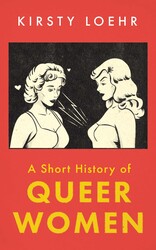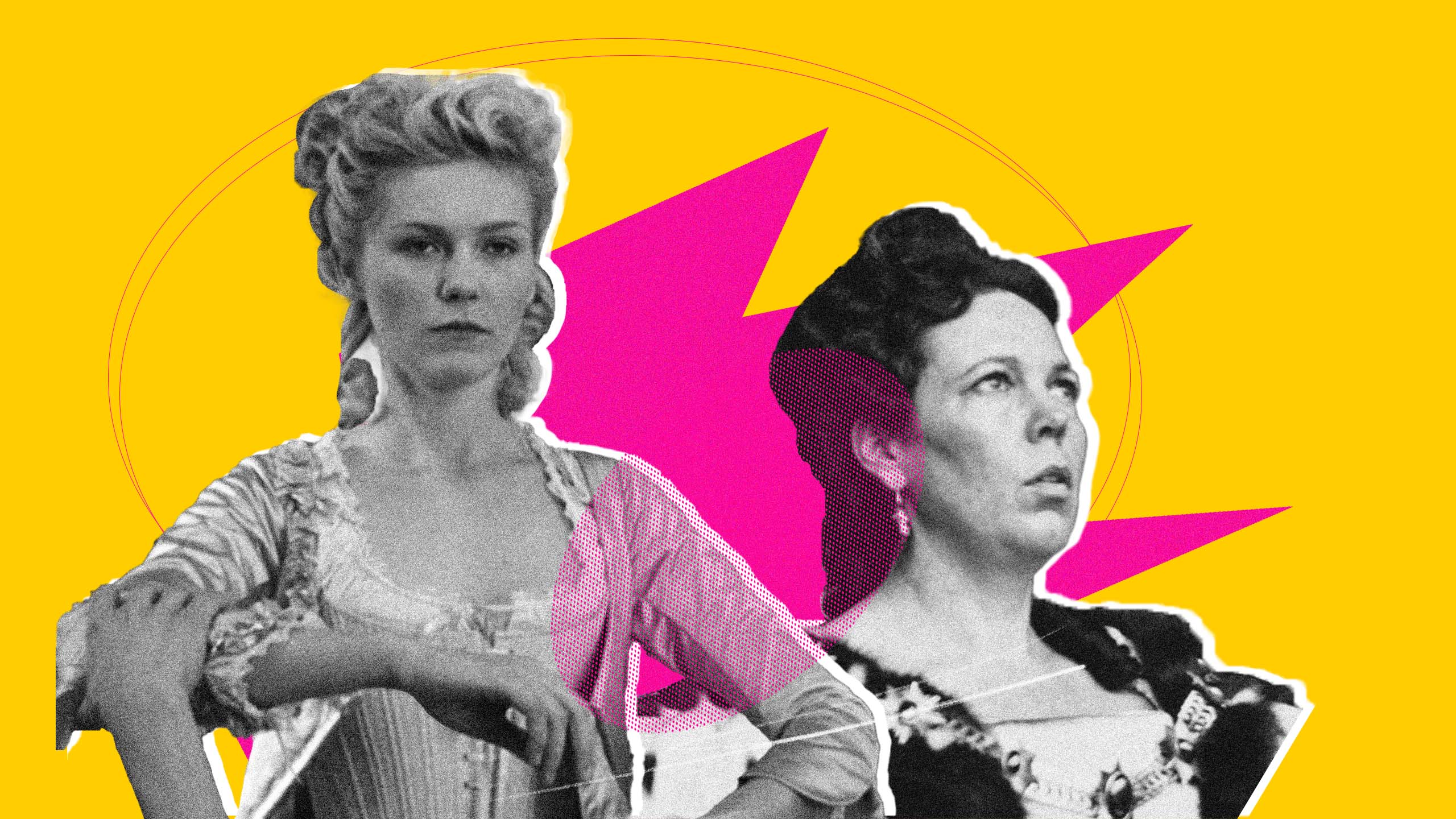They don’t get as much mainstream attention as they deserve, but women who love women have definitely made an impact throughout the history of the world. In Kirsty Loehr’s sassy A Short History of Queer Women, out Nov. 8, she employs a contemporary tongue-in-cheek storytelling style to recount the real-life stories of Sapphic—or perhaps the Roman word “tribade” is the more fun label—relationships across the ages.

In this excerpt, Loehr writes about Lady Frances Brudenell (1677/c.–1735), Delarivier Manley (1663/c.1670–1724), Marie Antoinette (1755–1793) and Queen Anne (1665–1714). For the British sovereign, Loehr riffs off the 2018 film The Favourite, which has its own deadpan comedic approach to history and who got up to what in court.
And now over to Loehr.
In England during the early 1700s, the writer William King was angry. He was adamant that Lady Frances Brudenell (otherwise known as the Countess of Newburgh) owed him some money, so he took her to court. William lost the case, so in revenge, he wrote an epic satirical poem called The Toast. The poem portrayed Lady Frances as a wanton witch who also happened to be the leader of a lesbian society. It was the first time the word “lesbian” was used in reference to female same-sex desire, and, unlike tribade [the Roman word for a woman who rubs her vulva against another woman for sexual pleasure], this one stuck….
William wasn’t the only satirist in town. The writer Delarivier Manley (1663/c.1670–1724) was also quite the comedian, and routinely parodied politicians across the country. But, unlike William, Delarivier was a woman, which meant she wasn’t safe. Arrests and libel threats ensued. Delarivier Manley was responsible for the lesbian rumours regarding the reigning queen at the time, Queen Anne. Delarivier often targeted Queen Anne’s right-hand woman, Sarah Churchill, Duchess of Marlborough, and the romantic relationship between them. This then led to accusations that Queen Anne and Sarah were doing it. Delarivier was correct, they were doing it! And there’s even a film to prove it!
Queen Anne (Olivia Colman) and Sarah (Rachel Weisz) first met as children. They immediately grew close and even had pet names for one another: Anne was Mrs. Morley, and Sarah, Mrs. Freeman. As they grew older, they became even closer, and whenever Sarah would leave court, Anne would send her long and soppy love letters detailing how much she was missing her.
When Anne became queen, Sarah held great influence and often guided the Queen on her political decisions. This was all well and good until the arrival of Sarah’s cousin, Abigail Hill (Emma Stone). The Queen took a liking to Abigail, and soon Sarah found herself out of favour. Sarah was livid, so she blackmailed Anne and threatened to release all the love letters that Anne had written. Sarah then orchestrated a smear campaign against Abigail, which included a really funny song about how Abigail was a dirty chambermaid who could not write. Unfortunately for Sarah, nothing seemed to work, and Queen Anne just fancied Abigail more.1
It all came to an explosive end when Sarah publicly insulted Queen Anne at a church service after Anne had refused to wear the jewels that Sarah had chosen for her. This resulted in Sarah’s dismissal from court, and her husband was told to return Sarah’s gold key to the royal bedchamber. Not a euphemism. Sarah being Sarah decided to rob a few grand from the privy purse and then remove all the brass locks from every door in the house that she was asked to leave. Honestly, it beggars belief that anyone thinks lesbianism is a modern concept when the story of Queen Anne and Sarah Churchill is the quintessential lesbian drama.
Queen Anne wasn’t the only royal dabbling in the dark arts of lesbianism. Marie Antoinette, Queen of France, was at it too. Marie wasn’t exactly beloved by her people; she spent a lot of money, ate a lot of food and didn’t seem too bothered that her subjects were starving in the streets. Although to be fair, Marie didn’t really have a say in the matter, as that was the job of her husband, King Louis XVI.
Marie and Louis were hardly love’s young dream, and initially got together to form a political alliance between France and Marie’s home country, Austria. The pair were utterly ill-suited. Louis was painfully shy, indecisive and cold. On the other hand, Marie was lavish, outgoing and extremely shallow. They were so uninterested in one another that it took them a whopping seven years to consummate their marriage.
Of course, Marie was to blame for the lack of sex and the noticeable lack of an heir. She only had one job, after all. The French media wanted her to know what a rubbish woman she was so they created cartoons about her failing sexual organs and wrote songs about how her body couldn’t do what it was supposed to do.
Marie may not have been interested in her husband, but she was most certainly into the ladies, and at one time was caught drooling over English writer Mary Robinson’s tits. The incident was later reported in Mary’s memoirs: “She appeared to survey, with peculiar attention, a miniature of the Prince of Wales, which Mrs. Robinson wore on her bosom …”
We’ve all done it.
But it was the nineteen-year-old widow Marie Thérèse Louise of Savoy who was Marie’s personal favourite. Marie was so charmed by Marie Thérèse Louise that she regularly showered her with gifts and made her the superintendent of the royal household, which sounds more like a punishment than anything else.
Marie and Marie Thérèse Louise wrote passionate letters to one another, addressing each one with “my dear heart” and ending with “a heart entirely yours.” But, like all horny queens, Marie Antoinette was keeping her options (and her legs) open. Enter Yolande Martine Gabrielle de Polastron.
Yolande was dubbed the most beautiful woman in France. Marie showed her affection by paying Yolande’s debts, moving her into a massive apartment in Versailles and eventually making Yolande’s husband a duke and therefore Yolande a duchess. This encouraged the French media to pipe up again, releasing thousands of pamphlets depicting the two in a range of sexual positions.
As we all know, things didn’t quite work out for Marie, as she famously met a grisly end with the guillotine during the French Revolution. But, before her death, Marie was allowed one final goodbye with her lover, not Louis XVI, but Marie Thérèse Louise. Marie Thérèse Louise had earlier been arrested and put on trial, where she refused to swear hatred to the King and Queen. She was then taken outside to a baying mob who murdered her. They cut off her head, took it to where Marie was being kept and demanded that she give her one-time lover a final kiss. Bloody hell, that’s unnecessary!
1 Just so you know, even though you never asked, I’m Team Sarah, but I think that might have something to do with the fact that Rachel Weisz played her in the movie.
This excerpt is taken from A Short History of Queer Women, by Kirsty Loehr, published by Oneworld Publications. Used with the permission of the publisher.


 Why you can trust Xtra
Why you can trust Xtra


